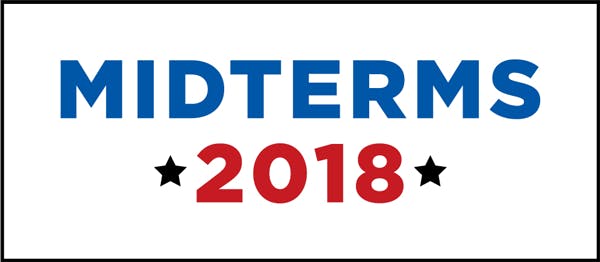During the month that the World Cup was broadcast on Florida’s three Telemundo TV stations this summer, one advertisement stood out. It begins with Colombian, Mexican, and Brazilian fans celebrating their national teams. Over a soaring score and a snare drum, a voice cuts in: “We in Florida celebrate because we come from all over the world, and this great state is now our home.” Then Republican Governor Rick Scott appears on camera, the sleeves of his light blue dress shirt rolled up. “I’m Rick Scott,” he says in rapid Spanish. “The time has come to enjoy the games. May the best team win!”
Scott’s $700,000 investment in the ad, which aired at least once a day throughout the World Cup, reaching hundreds of thousands of Latinos across Florida, suggests that he sees their votes as a key element in his strategy to unseat Senator Bill Nelson this fall. The 75-year-old Democratic incumbent hasn’t shown the same interest. While Nelson has taken strong stances on Latino issues, he didn’t invest in any World Cup ads of his own and, as of July, had only recently begun rolling out a Spanish-language page on his web site. (Scott had had one up for months.)* Such decisions reveal a cavalier attitude toward Latino voters that isn’t just a problem for Nelson, whose race is unexpectedly tight, but for the party as a whole.
Donald Trump’s decision to strike down protections for young, undocumented immigrants; the botched response to Hurricane Maria in Puerto Rico; the ramped-up deportations and separated families at the border—all these should help Democrats win over Latino voters. Matt Barreto of the polling firm Latino Decisions said he has never seen them so frustrated. A recent poll of 1,000 Latino voters found that more than 70 percent were “very angry” about the separation of families at the border and about Trump calling immigrants “animals.” And yet Democratic candidates are underperforming in key Hispanic districts: In California’s 39th, which Hillary Clinton carried in 2016, Democrat Gil Cisneros is now trailing the Republican incumbent by 2 points, according to a recent poll; and in Texas’s Senate race, Democrat Beto O’Rourke struggled during the primary to drum up support in the predominantly Latino border towns. (More recently, in a May Quinnipiac poll, he was lagging behind Ted Cruz with Hispanic voters, 46 percent to 44 percent.) Such signs should spur Democratic leaders, who are relying on Hispanic support to win back the House, to redouble their efforts to engage Latinos, organizationally and financially. But it hasn’t happened.
The money and the machinery is there. It’s just that not enough of it is directed at Latinos. With total spending on the midterm elections expected to reach $4 billion, outside groups and super PACs have almost unlimited funds. Billionaire environmentalist Tom Steyer has pledged $30 million to take back the House. Liberal philanthropist George Soros has already spent $15 million. And Michael Bloomberg has promised $80 million. Yet none of the cash they have allocated has been earmarked exclusively for a major new initiative to reach Latinos. Bloomberg has been focused on gun control and Steyer on climate change—as well as impeachment. He has spent another $40 million on billboards in Times Square, town hall meetings, and TV ads urging the House to oust the president. “If he’d given Mi Familia Vota [a Latino group that works to register and mobilize Hispanic voters] that money, they would have registered enough Latino voters by now to turn Texas blue,” said Andres Ramirez, a veteran Democratic strategist. Yet most of these liberal megadonors “would scoff at Latino groups making this request,” he added. “They wouldn’t even entertain it.”
Part of the problem is who’s in the room making choices about where to put the money. “The structural spaces that make these decisions constantly exclude Latinos,” said Hector Sanchez Barba, executive director of the Labor Council for Latin American Advancement. The Democratic super PAC Priorities USA, for example, has long been criticized for having only a handful of Latinos on staff. (A spokesperson from Priorities said it is “interviewing consulting firms to supplement our staff.”)
Votes Trump won by in Texas:
800,000
Eligible Latinos who didn’t vote:
3 million
This impacts how funds are distributed: Increasingly, Latino outreach efforts are folded into broader plans to engage black voters and other minorities. This is the case at Steyer’s NextGen Rising and at George Soros’s Democracy Alliance, which used to have an annual $5 million Latino engagement fund—until two years ago, when it was overhauled and given a new mission: to support Latino, African American, Native American, Pacific Islander, and LGBT groups. The fund’s director, David Montez, won’t divulge how much of his current annual budget goes to Latinos, saying only, “It’s not enough.” And even with Tom Perez, the first Latino to head the Democratic National Committee, at its helm, the party has been little help. Apart from a $2.5 million effort to engage “low propensity” voters, which includes both minority groups and rural voters, the DNC has only spent $100,000 on Latino engagement in Florida and another $100,000 in Pennsylvania. “They should be doing [more of] this work, but frankly they don’t have the money,” said a DNC member who works on diversity outreach and who asked for anonymity to describe the state of the party’s finances.
Without funds devoted to Latinos specifically, it’s going to be difficult to turn them out, let alone register them to vote. In the ten states with the largest Hispanic populations, between 40 to 43 percent of the Latino community has not yet registered this year, said Ben Monterroso, Mi Familia Vota’s executive director. “The bottom line is, if we’re not invited to the party, we’re not coming.”
*Correction: A previous version of this story stated that Senator Nelson didn’t have a Spanish-language page on his web site by August. In fact, his campaign had begun rolling one out the previous month.

